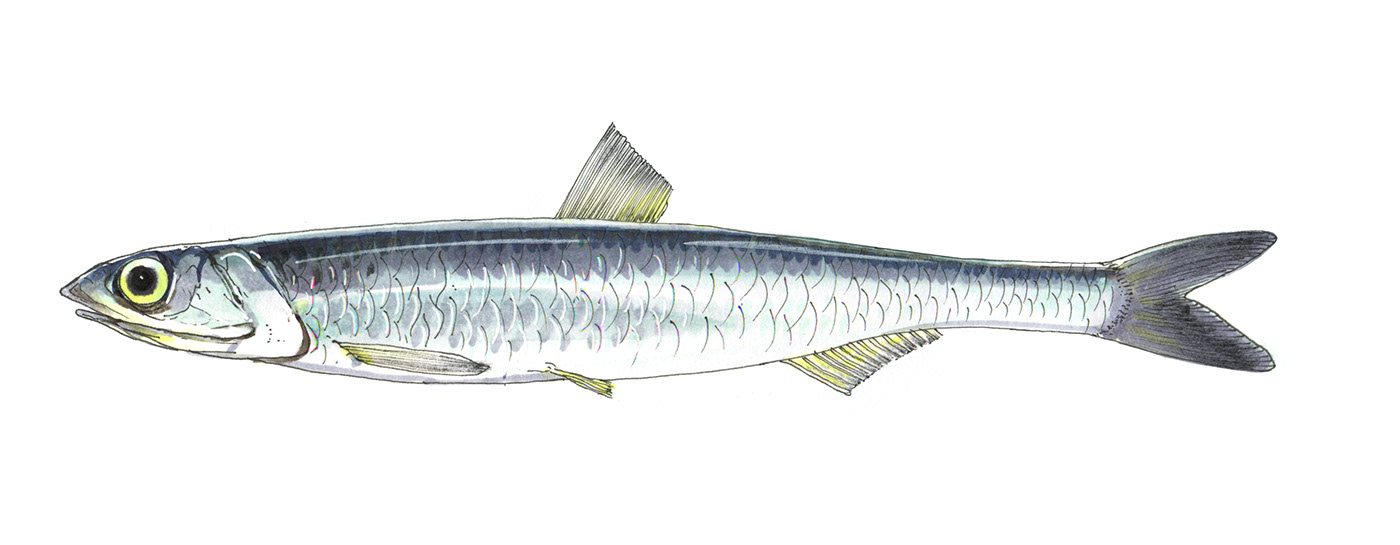
This Atlas is the first book of Russian Seas Ecology series that I've illustrated.
Every Atlas is a result of years of research and contains extensive data, analysed by ecologists, biologists, hydrometeorologers, oceanologists, physiographers, and other researchers.
My part in this project was to create a set of 39 scientific illustrations, one for each species of mammals, birds, plants and algae.

The book is a solid edition, quite heavy and large-scale

Butcher's broom (Ruscuc ponticus)

Materials are important to me. I find media being the message a nice touch and I try to demonstrate that little extra level of care in all of my projects. In this case I wanted to highlight my passion for analogue contemporary tools.

An algae species called Ellisolandia elongata (syn. Corallina elongata). A fully grown specimen. is no larger then 50 mm.
Historically, the rise of natural science and the following spike in demand for scientific illustration dates back to 18-19 centuries. Ink and watercolour were traditionally used to create scientific illustrations, as that was a time-saving and detailed alternative to oil paintings. Those illustrations were print-friendly, with fine ink lines and subtle watercolour tones that translated well via etching and lithography. Hence, originally the drawing tools were dictated by the printer capacity. Today these limits are no more, anything can be easily printed. Scientific illustration, from what I've gathered, either sticks to the original ink-and-watercolour combo or goes fully digital. The software finally caught up and now the most time-saving tool is a tablet. Understanding all that, I still have a soft spot for analogue tools. And I do believe that one of my favourite tools, the ink marker, hasn't yet settled into the scientific illustration timeline. Copic marker is a rather recent product. It was launched in 1987, so we're the same age. I haven't seen other illustrators use markers for scientific illustration (at least, not here, in Russia) so I decided to give it a go.

I really enjoy the brightness of the ink. It's alcohol-based, and dries significantly faster then watercolours. Not having to wait between the layers has a small downside: because the ink is absorbed by paper almost instantly, I have to be really quick about even the spread of pigment. Each illustration is coloured in one go – it's better not to pause between layers, to avoid creating a thin nasty border in between. In order not to stumble I keep a color chart close, so that I can assess what colours I'm using for this particular tree or bird, and get them ready on the table.

Once scanned, the drawing still has the analogue quality as the set pigment creates an unmistakable texture on paper. It's only seen if you look closely, which works fine in this case, as the pages are sized generously.

After the drawing-on-paper is done, scanned and cleaned, it is sent to scientists colleges for their feedback. I'm an illustrator, so my biological knowledge is far more limited then my drawing skills. Therefore, I team up with scientists, who research the species, to see all non-obvious (ok, obvious, too) things that went wrong with the drawing. Then I fix those inaccuracies in Photoshop – like the color of a pine cone (which was originally not ripe enough) or of brown algae (didn't know that they're only green when dead, and we definitely needed an illustration of a live one, so the illustration went from salad green into olive-brown), the shape of a fish's eye or the arch of a dolphin's back.

Common bottlenose dolphin (Tursiops truncatus, prev. Delphinus delphis)

After all adjustments are in place, I can add the final illustrations to the plate. This atlas has six in total, one for each chapter.

Black-necked grebe (Podiceps nigricollis)
the Black and Azov Sea Eco Atlas is in public access


